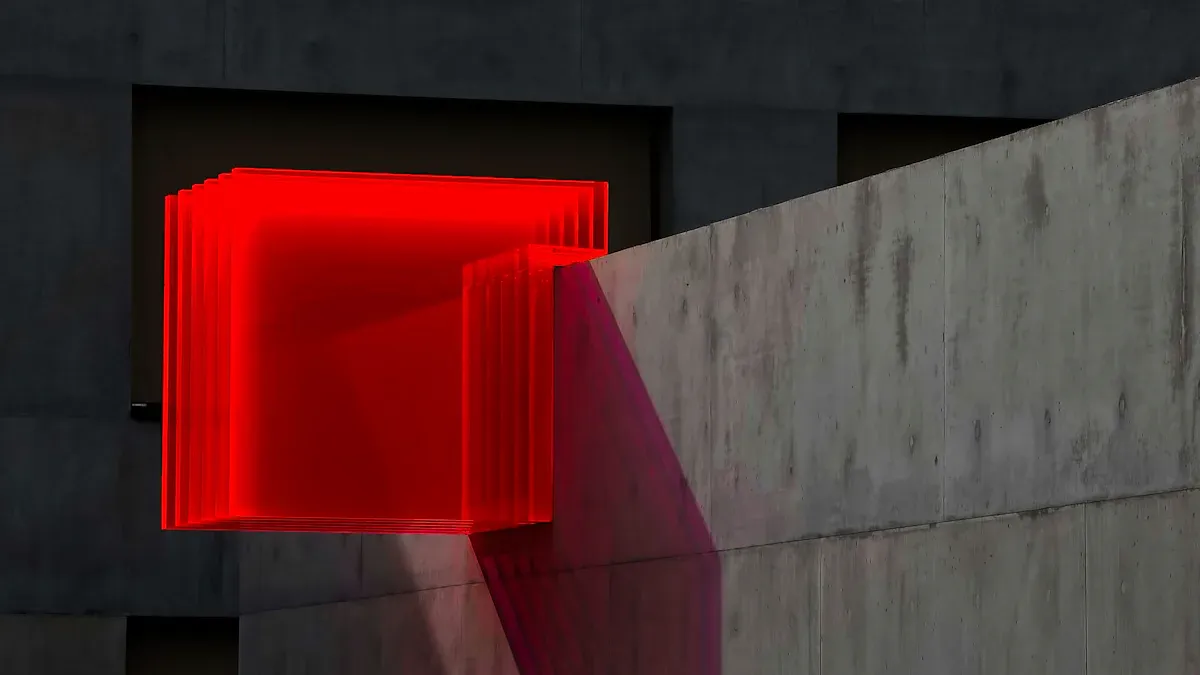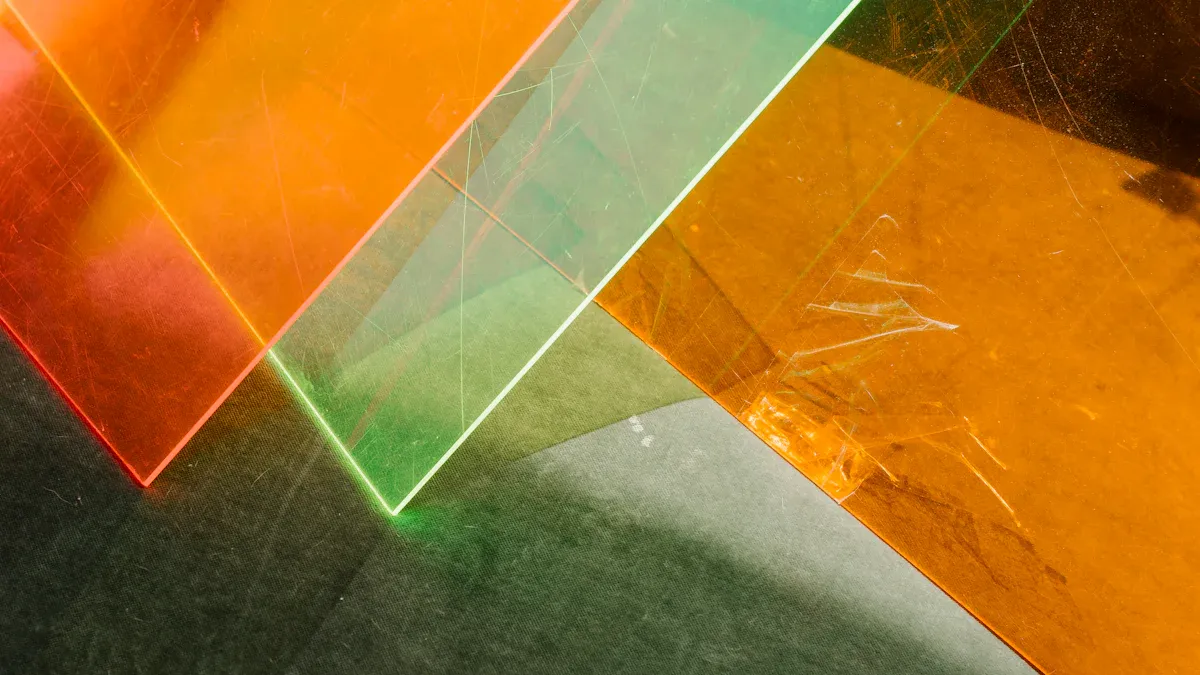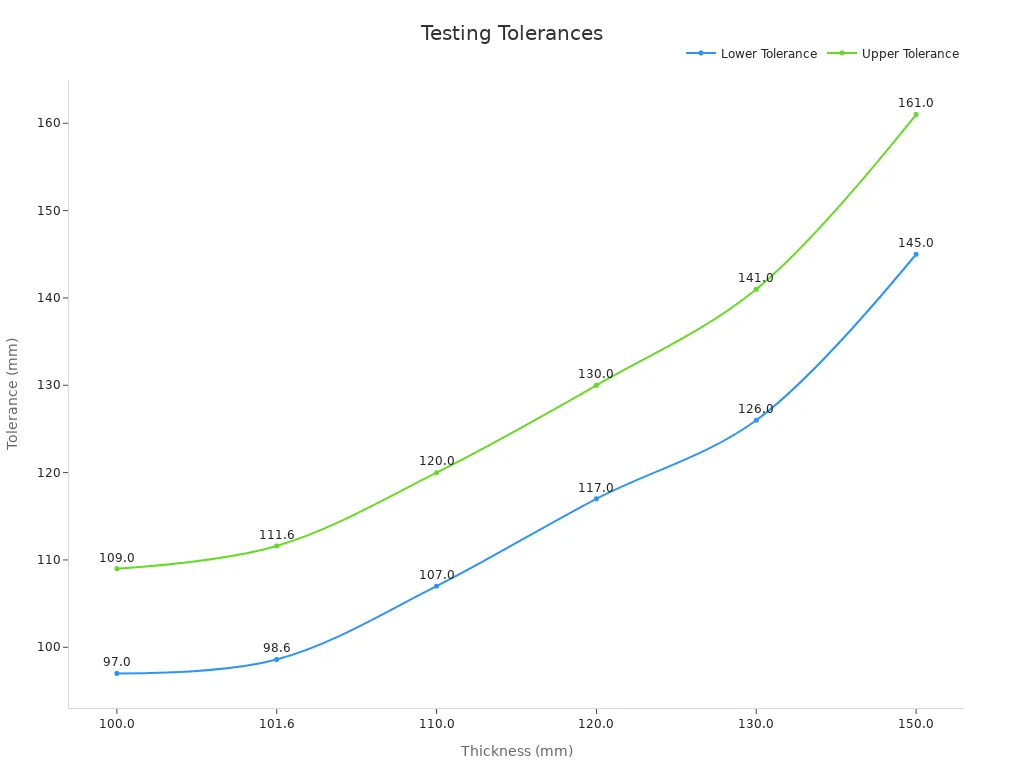Understanding Acrylic Types for Light Box Applications: Cast vs. Extruded, Diffused vs. Clear

When selecting materials for an advertising light box, understanding the various acrylic types is essential. Cast acrylic is very clear and resists UV rays, making it ideal for projects that require clear visibility. Extruded acrylic is tougher and more cost-effective, making it suitable for environments where it might be subjected to impact. Diffused acrylic spreads light evenly, creating a soft glow, while clear acrylic allows the most light to pass through. Your choice of acrylic types significantly influences the performance, durability, and appearance of the crystal light box.
Key Takeaways
Pick cast acrylic for outdoor light boxes. It is tough, clear, and blocks UV rays, lasting longer.
Use extruded acrylic for cheaper projects. It costs less and is easy to shape, great for indoor use.
Choose diffused acrylic for soft, even light. It cuts glare and gives a warm glow, good for cozy displays.
Go with clear acrylic for bright, sharp looks. It lets the most light through, making designs stand out.
Think about your project’s needs. Match the acrylic type to where it will be, how it will be lit, and your budget for the best outcome.
Overview of Acrylic Types
Acrylic in Light Box Applications
Acrylic sheets are important for light boxes because they work well and look good. They are strong but lightweight, making them great for eye-catching displays. Unlike metal or fabric, acrylic is clear and blocks UV rays, so it works indoors and outdoors.
Benefits | Uses | |
|---|---|---|
Acrylic | Light, UV-blocking, flexible | Store signs, outdoor ads |
Metal | Strong, stylish look | Building signs, business use |
Fabric | Easy to move, changeable designs | Events, trade shows |
Picking acrylic for light boxes makes them last longer and look better. It also works with different lighting styles to make displays stand out.
Cast, Extruded, Diffused, and Clear Acrylic Types
Knowing how cast, extruded, diffused, and clear acrylic differ helps you choose wisely.
Cast Acrylic: Made by pouring liquid into molds, it’s great for cutting and signs.
Extruded Acrylic: Made by pushing material through a machine, it’s good for shaped signs and prints.
Diffused Acrylic: Spreads light evenly, giving a soft, smooth glow for lit displays.
Clear Acrylic: Very clear and lets the most light through, perfect for bright designs.
Each type has special features, like heat resistance or strength. For example, cast acrylic doesn’t bend or chip easily, while diffused acrylic spreads light better.
Why Acrylic Selection Matters for Light Boxes
The acrylic you pick affects how your light box works and lasts. Things like light type, possible damage, and weather decide what you need.
Factor | Why It’s Important |
|---|---|
Light Type | Helps spread or focus light for your design. |
Risk of Damage | Shows how strong the material needs to be. |
Fire Safety | Keeps it safe in hot places. |
Weather Resistance | Makes sure it lasts outside in all weather. |
Temperature Limits | Keeps it working in very hot or cold places. |
Choosing the right acrylic balances cost, looks, and how well it works. This makes sure your light box is both useful and attractive.
Cast Acrylic vs. Extruded Acrylic

How They Are Made
Cast acrylic and extruded acrylic are made in different ways. Cast acrylic is made by pouring liquid into molds. This process, called cell casting, makes it high-quality with even thickness. Extruded acrylic is made by pushing material through a machine. This method is faster and cheaper but can cause flaws and uneven thickness.
Type of Acrylic | Thickness Consistency |
|---|---|
Cast Acrylic | More consistent across batches |
Extruded Acrylic | Less consistent due to faster production |
Cast acrylic usually has better quality, especially when made locally. Extruded acrylic might use recycled materials, which can lead to imperfections.
Features of Cast Acrylic
Cast acrylic has many benefits that make it a favorite for light boxes. It is very clear, showing bright and colorful displays. It is strong and safe, resisting impacts better than glass. Cast acrylic is also lightweight, making it easier to carry and install.
Main Advantages of Cast Acrylic:
Very clear for bright displays.
Strong, up to 6-17 times tougher than glass.
Lightweight, easy to handle and install.
Durable and blocks UV rays, good for outdoor use.
Cast acrylic is used in many industries because it’s versatile. Car and airplane makers like it for being light. Outdoor ads use it for its strength and clarity.
Features of Extruded Acrylic
Extruded acrylic is popular because it’s affordable and easy to make. Its production process saves money, making it great for big projects. However, it’s not as strong or clear as cast acrylic.
Main Advantages of Extruded Acrylic:
Budget-friendly for cheaper projects.
Even thickness, good for designs needing uniformity.
Easy to cut and shape, saving time during production.
Extruded acrylic works best indoors or for projects focused on cost. It’s not as durable or clear as cast acrylic but is a good choice for saving money.

Performance in Light Box Applications
Choosing materials for light boxes depends on how they work in different situations. Cast acrylic and extruded acrylic have their own benefits, but they perform differently based on the use.
Cast acrylic is very clear and strong. It blocks UV rays, making it great for outdoor light boxes in sunlight. Cast acrylic stays clear over time without turning yellow or cloudy. Its strength makes it safer than glass, especially in places where it might get hit. Cast acrylic can be shaped into detailed designs, giving your light box a clean and professional look.
Extruded acrylic is cheaper and has even thickness. It’s a smart choice for big projects or when you need sheets that match perfectly. Extruded acrylic is easy to cut and shape, saving time during production. But it doesn’t handle bad weather or sunlight as well as cast acrylic. It works better indoors or for short-term displays when saving money is important.
The acrylic you pick changes how the light box works. Cast acrylic is tough and clear, while extruded acrylic is affordable and simple to use. Knowing these differences helps you choose the right material for your design and needs.
Diffused Acrylic vs. Clear Acrylic
How Light Passes Through
Light behaves differently with diffused and clear acrylic. Clear acrylic lets light pass straight through. This makes the light bright and focused, with sharp edges and shadows. But, it can cause glare, which might be uncomfortable to look at.
Diffused acrylic spreads light evenly over its surface. This softens the brightness and reduces harsh shadows and glare. It creates a smooth glow that makes displays easier to see. For soft lighting or comfort, diffused acrylic is often the better choice.
Test Name | What It Measures |
|---|---|
ASTM D-1003 | Checks how clear and hazy the plastic is. |
Half-value angle | Tests how light spreads at different angles. |
Light diffusion power | Measures how well light spreads at a 45° angle. |
Looks in Light Boxes
How a light box looks depends on its material. Clear acrylic is great for bright, sharp designs. It shows fine details and creates bold effects. But it might not fit in softer, cozy spaces.
Diffused acrylic makes spaces look warm and inviting. Outdoor light boxes with diffused acrylic can brighten gardens or patios with a soft glow. It’s also great for decorative boxes, creating fun light patterns. For signs or art displays, diffused acrylic adds beauty while staying useful.
Why Choose Diffused Acrylic
Diffused acrylic has many benefits for light boxes. It spreads light evenly, making displays look clear and easy on the eyes. It’s strong and doesn’t break easily, so it works indoors and outdoors.
Benefit | What It Does |
|---|---|
High transparency | Lets plenty of light through. |
Great light diffusion | Spreads light evenly. |
Strong and impact-resistant | Handles bumps and stress well. |
Budget-friendly | Costs less than other materials. |
Diffused acrylic is a good choice for strong, nice-looking, and clear displays. It works for many designs, from pretty to practical light boxes.
Benefits of Clear Acrylic
Clear acrylic has many benefits for light boxes. It is very clear, making displays look bright and sharp. It lets 92% of light pass through, more than polycarbonate, which allows only 88%. This high clarity makes designs pop, whether used indoors or outdoors.
Material | Light Transmittance | Polishing Capability |
|---|---|---|
Acrylic | 92% | Yes |
Polycarbonate | 88% | No |
Clear acrylic stays clear over time. It does not turn yellow or break down from UV rays. This means your light box will look great even after years of use. It works well in sunlight and bad weather without losing its look.
Tip: Use clear acrylic if you want a material that stays bright and clear for a long time.
Clear acrylic is also strong and long-lasting. It handles tough weather without breaking or bending. You can polish its surface to make it shiny again, keeping your display looking new.
Choosing clear acrylic gives you a mix of beauty and strength. It makes light boxes brighter and lasts for years. If you need something clear and durable, clear acrylic is a smart pick.
Choosing the Right Acrylic for Light Boxes
Matching Acrylic Types to Design Needs
Picking the right acrylic depends on your light box's purpose. For soft, even lighting, diffused acrylic is the best choice. It spreads light evenly, creating a cozy and warm glow. If you want sharp and bright visuals, clear acrylic is perfect. Its high clarity makes displays look detailed and vibrant.
Think about where the light box will be used. Outdoor light boxes need materials that can handle sunlight and bad weather. Cast acrylic is strong and clear, making it great for outdoor displays. For indoor or short-term projects, extruded acrylic is a cheaper option that still looks good.
Balancing Cost and Performance
It’s important to balance cost and performance when choosing acrylic. Cast acrylic costs more because it’s stronger and lasts longer. It keeps its clarity over time, making it worth the price for long-term or busy areas.
Extruded acrylic is less expensive and easier to make. It’s good for big projects or designs needing even thickness. While not as strong as cast acrylic, it works well indoors or in controlled spaces.
Customizing acrylic also affects the price. You can shape it into different sizes, colors, and designs. The cost depends on how thick, big, or complex the design is. By knowing these details, you can pick an acrylic type that fits your budget and project needs.
Aspect | Details |
|---|---|
Durability | Acrylic is tough and protects displays from scratches or breaks. |
Customization | Can be shaped and colored to match your design ideas. |
Cost Factors | Price depends on size, thickness, and design complexity. |
Manufacturing Process | Easy to adjust for specific project needs. |
Expert Tips for Acrylic Selection
Set Your Goals: Decide if you need looks, strength, or low cost.
Think About Lighting: Use diffused acrylic for soft light or clear acrylic for bright displays.
Check the Location: Pick UV-resistant cast acrylic for outdoor use. Use extruded acrylic for indoor or short-term projects.
Plan Custom Designs: Make sure the acrylic type can handle special shapes or colors.
Test First: Get samples to see how the material works with your design and light.
By following these tips, you can choose the best acrylic for your light box. This ensures it looks great and works well for your needs.
Picking the right acrylic for your light box is important. Cast acrylic is very clear and strong, great for lasting use. Extruded acrylic is cheaper and works well for simple projects. Diffused acrylic spreads light softly, making it nice for cozy displays. Clear acrylic gives bright, sharp light, perfect for bold designs.
Tip: Choose the acrylic type based on your needs. Think about where it will go, how it will look, and your budget.
Knowing these differences helps you pick the best material. This makes sure your light box looks great and lasts a long time.
FAQ
What acrylic is best for outdoor light boxes?
Cast acrylic is the top choice for outdoor use. It stands up to UV rays and bad weather, keeping displays clear and strong for a long time.
How does diffused acrylic help with lighting?
Diffused acrylic spreads light evenly across its surface. It softens glare and shadows, making signs easier to see with a gentle glow.
Can extruded acrylic last for long-term projects?
Extruded acrylic is better for short-term or indoor use. It’s cheaper but doesn’t handle sunlight or tough weather as well as cast acrylic.
Is clear acrylic good for decorative light boxes?
Clear acrylic is great for bold, bright designs. It shows sharp details but doesn’t create the cozy feel that diffused acrylic offers.
How do I pick the right acrylic for my light box?
Think about your design, location, and budget. Use cast acrylic for strength, diffused acrylic for soft light, and extruded acrylic for affordable indoor projects.
See Also
Exploring Acrylic Sheets: Uses, Features, and Benefits
Comparing Cast And Extruded Acrylic For Optimal Light Display
Choosing Acrylic Light Boxes: Uses, Advantages, And Tips
Understanding Acrylic LED Light Boxes: Varieties And Setup
Acrylic Light Panels: Varieties, Uses, And Installation Guide

